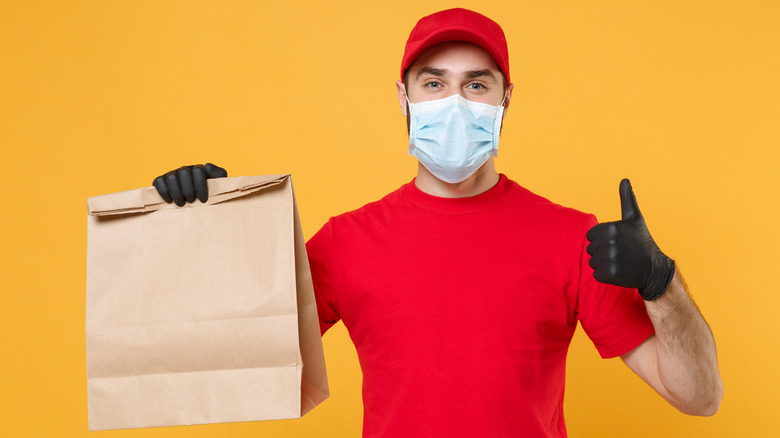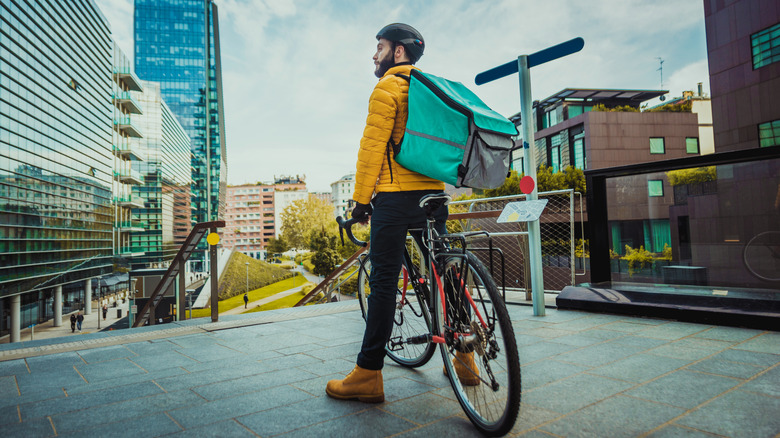Why Restaurants Should Be Treating Delivery Equal To In-Person Dining
The food service business landscape has dramatically shifted in recent years. Many restaurants were forced to close their doors when the United States was first severely affected by the COVID-19 Pandemic (via New York Times). Practically overnight, restaurants were forced to react and adapt to stay-at-home orders, bans on indoor seating, and bans on gatherings. Once the initial shock was over many restaurants reopened in new forms that were bolstered by the support of delivery services like Uber Eats, DoorDash, and Instacart (via Market Watch). Even restaurants that had resisted the online delivery services and apps were forced to get on board.
According to Market Watch, Zachary Davis of the Glass Jar restaurant group said that he avoided joining the services before the pandemic because of the additional fees. After the pandemic hit though, it was the only way for his restaurants to continue operating. According to Upserve, by July 2020, 47% of restaurant owners said their biggest challenge was shifting their business model to include online ordering. According to a National Restaurant Association report, 53% of individuals now believe that ordering online is essential to the way they live (via QSR Magazine).
Delivery is no longer an afterthought
Even though pandemic lockdowns have ended, many diners became accustomed to using delivery services. There seems to be no going back for the restaurant industry. According to QSR Magazine, restaurants formerly separated their in-person, or on-premises, diners, and off-premises diners. They say that restaurants now need to think of their services as being "omni-prem;" because of the increased presence of online delivery orders, both on- and off-premises orders are increasingly representative of a restaurant's overall quality.
McKinsey notes that using these delivery services is unsustainable under pre-pandemic business models. Consider Chipotle's business; digital orders now represent 50% of the chain's business, according to PYMNTS. According to McKinsey, if delivery orders are overtaking valuable kitchen labor and space, it affects the on-premises dining experience and increases the restaurant's fixed costs. According to Yahoo! Finance, Chipotle has already adjusted its operating costs by raising its in-app delivery prices by 13% to account for these increased costs. If other restaurants are seeing similar increases in digital orders they'll need to shift their pricing accordingly to cover delivery fees, and consumers will start to see more restaurants increasing their in-app delivery fees.

